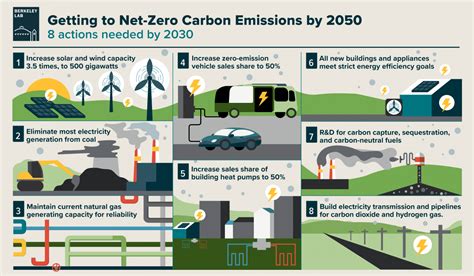Understanding Renewable Energy Sources
Renewable energy sources are crucial for sustainable development and reducing our reliance on fossil fuels. Understanding these sources is essential in order to make informed decisions about our energy consumption and contribute to a greener future.
One of the most common renewable energy sources is solar power. Solar energy is harnessed by using photovoltaic (PV) panels that convert sunlight into electricity. These panels can be installed on rooftops or in large solar farms, and they have the ability to generate electricity even on cloudy days.
Wind energy is another significant renewable resource. Wind turbines convert the kinetic energy in the wind into mechanical power, which is then used to generate electricity. Wind farms, typically located in open areas with high wind speeds, are becoming increasingly popular as their technology becomes more advanced and cost-effective.
Hydropower utilizes the energy of flowing or falling water to generate electricity. It is one of the oldest and most widely used renewable energy sources. Dams and hydroelectric power plants are built on rivers, allowing the force of the flowing water to turn turbines and produce electricity. Hydropower offers a reliable and consistent source of clean energy.
- Renewable energy sources:
- Solar power
- Wind energy
- Hydropower
| Renewable Energy Source | Advantages | Disadvantages |
|---|---|---|
| Solar power | – Abundant source of energy- Reduces greenhouse gas emissions- Low operational costs | – Dependence on sunlight availability- Initial installation costs- Storage limitations |
| Wind energy | – Endless source of energy- No air pollution- Land and water conservation | – Intermittent energy production- Noise pollution- Visual impacts |
| Hydropower | – Reliable and predictable- No air pollution- Assist in water management | – Environmental disruptions- High capital investment- Limited suitable locations |
It’s important to note that each renewable energy source has its own advantages and disadvantages. Solar power, for example, relies on sunlight availability and requires initial installation costs. Wind energy is intermittent, meaning it’s not always producing electricity, and it can have visual and noise impacts. Hydropower, while reliable, can cause environmental disruptions and may have restricted suitable locations.
Nonetheless, the benefits of renewable energy sources are significant. They provide clean and sustainable alternatives to fossil fuels, reduce greenhouse gas emissions, and help combat climate change. By understanding the various renewable energy sources available, we can actively contribute to a more sustainable future and make informed choices about our energy consumption.
Advances in Green Technology
Green technology, also known as clean technology, refers to the development and application of products, services, and processes that use renewable materials and energy sources, reduce emissions and waste, and have a minimal impact on the environment. In recent years, there have been significant advances in green technology, paving the way for a more sustainable future. These advancements have helped address environmental challenges and provide solutions to promote a greener and more eco-friendly world.
One notable advancement in green technology is the development of renewable energy sources. Renewable energy sources such as solar power, wind power, and hydropower have seen significant progress in terms of efficiency, affordability, and accessibility. The use of solar panels to generate electricity has become more widespread, with improved technologies enhancing their performance and reducing costs. Similarly, innovations in wind turbine design and construction have made wind power an increasingly viable option for generating clean energy. The integration of these renewable energy sources into the existing energy grid has revolutionized the way we produce and consume electricity.
The benefits of green technology extend beyond energy generation. In the transportation sector, the development of electric vehicles (EVs) has gained significant momentum. EVs offer a cleaner and more sustainable alternative to traditional combustion engine vehicles, as they produce zero tailpipe emissions and reduce dependence on fossil fuels. Advances in battery technology have increased the driving range and charging speed of EVs, making them a practical choice for everyday use. Additionally, the deployment of smart grid technology and energy-efficient buildings has contributed to the efficient use of energy, saving costs and reducing carbon footprints.
Incorporating green technology into various industries has presented challenges, but it has also opened up new opportunities. Companies and organizations are investing in research and development to create innovative solutions that address environmental concerns while meeting consumer demands. Governments around the world play a crucial role in supporting and incentivizing the adoption of green technology through policies, regulations, and financial incentives. They actively promote research, development, and implementation of green technology to accelerate the transition to a sustainable future.
As advancements in green technology continue, it is essential to promote widespread adoption and awareness. Education and public awareness campaigns can help individuals understand the benefits of green technology and encourage them to make more sustainable choices in their daily lives. Collaboration between governments, businesses, and individuals is key to driving the further advancement and integration of green technology into our society and achieving a more sustainable future for generations to come.
Benefits of Renewable Energy
Renewable energy is gaining momentum as an important aspect of our global energy transition. With the increasing concern about climate change, the need to shift towards sustainable and clean energy sources has become more urgent than ever before. Renewable energy sources, such as solar, wind, hydro, and geothermal power, offer numerous benefits that make them a viable alternative to traditional fossil fuels.
1. Environmental Impact:
One of the key advantages of renewable energy is its minimal environmental impact. Unlike fossil fuels, renewable energy sources produce little to no greenhouse gas emissions when generating electricity. This helps mitigate climate change by reducing the amount of carbon dioxide and other pollutants released into the atmosphere. Additionally, renewable energy systems also have a smaller water consumption footprint compared to conventional power plants, which is vital for water-stressed regions.
2. Energy Independence:
By investing in renewable energy infrastructure, countries can reduce their dependence on imported fossil fuels. Renewable energy sources are available domestically and can be harnessed locally, decreasing the vulnerability to price fluctuations and geopolitical tensions associated with fossil fuel imports. This enhances energy security and allows nations to have greater control over their energy supply and costs.
3. Job Creation and Economic Growth:
The transition towards renewable energy creates numerous job opportunities and stimulates economic growth. According to the International Renewable Energy Agency (IRENA), the renewable energy sector employed over 11 million people globally in 2018. As the sector continues to expand, it is expected to generate even more employment opportunities in various fields such as manufacturing, construction, installation, and maintenance of renewable energy systems. This not only improves local economies but also fosters innovation and technological advancements.
4. Public Health Benefits:
Burning fossil fuels for energy production is associated with air pollution, which has detrimental effects on human health. By shifting to renewable energy sources, we can reduce air pollution, resulting in improved air quality and public health. Renewable energy systems do not emit pollutants that contribute to respiratory diseases, cardiovascular problems, and other health issues linked to air pollution. This transition can help save lives, reduce healthcare costs, and enhance the overall well-being of communities.
Overall, the benefits of renewable energy are wide-ranging and impactful. By embracing and investing in renewable energy, we can mitigate climate change, foster energy independence, create employment opportunities, improve public health, and achieve a sustainable future. It is crucial for governments, businesses, and individuals to recognize and support the importance of renewable energy in order to reap these benefits and secure a clean and prosperous future for generations to come.
Integration of Renewable Energy into Existing Systems
Renewable energy sources such as solar, wind, and hydro power have gained significant attention in recent years due to their potential to reduce greenhouse gas emissions and combat climate change. However, one of the challenges in harnessing the full potential of renewable energy is integrating it into existing energy systems. Traditional energy systems have been predominantly reliant on fossil fuels, and incorporating renewable energy sources requires careful planning and implementation. In this blog post, we will explore the importance of integrating renewable energy into existing systems and the strategies that can be adopted to overcome the associated challenges.
List of Challenges:
- Limited infrastructure
- Intermittency and variability
- Storage capacity
- Cost implications
- Technological advancements
Table: Strategies for Integration
| Strategies | Benefits |
|---|---|
| Grid Expansion | Allows for increased transmission capacity and efficiency |
| Energy Storage | Provides backup power during periods of low renewable energy generation |
| Smart Grids | Enables efficient management and monitoring of renewable energy sources |
| Policy Support | Encourages investment and facilitates integration of renewable energy |
| Collaboration | Promotes knowledge sharing and innovation among different stakeholders |
Integration of renewable energy into existing systems requires a multi-faceted approach. Firstly, it is crucial to address the limited infrastructure for renewable energy generation. Building new power plants, transmission lines, and energy storage facilities can enhance the capacity and reliability of renewable energy integration. Additionally, the intermittency and variability of renewable energy sources pose a challenge, as their generation is dependent on weather conditions. To mitigate this, energy storage systems such as batteries and pumped hydro storage can store excess energy during periods of high generation and provide backup power during low generation.
Overcoming Challenges in Renewable Energy Implementation
Renewable energy has become a crucial aspect of our global efforts towards sustainability and combating climate change. However, its widespread implementation often faces various challenges that need to be overcome for maximum effectiveness. In this blog post, we will discuss some of the key challenges in renewable energy implementation and explore potential solutions to tackle them.
1. Economic Viability: One of the major hurdles in renewable energy implementation is the high initial cost. Investing in renewable energy technology can be expensive, especially when compared to traditional fossil fuel-based systems. Governments, organizations, and individuals often face financial constraints when considering renewable energy projects. To overcome this challenge, governments can offer tax incentives, subsidies, and grants to encourage investment in renewable energy. Additionally, advancements in technology and economies of scale can help reduce the overall cost of renewable energy infrastructure.
2. Grid Integration: Another significant challenge is the integration of renewable energy sources into existing power grids. Unlike traditional energy sources, renewable energy tends to be intermittent and depends on weather conditions. This variability presents challenges when it comes to stabilizing the grid and ensuring a continuous supply of electricity. To address this, advanced grid technologies, such as smart grids, energy storage systems, and demand response mechanisms, can be implemented. These solutions can help balance the intermittent nature of renewable energy and ensure a reliable power supply.
3. Public Perception and Awareness: Overcoming public resistance and improving awareness about the benefits of renewable energy is crucial. Some individuals may have misconceptions or lack knowledge about renewable energy sources, resulting in opposition to their implementation. Educating the public through awareness campaigns, providing accurate information about renewable energy’s benefits, and highlighting success stories can help overcome this challenge. Governments, non-profit organizations, and renewable energy companies can collaborate to promote public acceptance and support for renewable energy projects.
Implementing renewable energy on a large scale is vital for a sustainable future. By addressing economic viability, grid integration, and public perception challenges, we can pave the way for a clean and green energy revolution. It requires collective efforts from governments, organizations, and individuals to overcome these challenges and make renewable energy a primary source of power worldwide.
Strategies to Achieve Energy Sustainability
Energy sustainability is a crucial goal for a sustainable future, as it focuses on meeting the energy needs of the present without compromising the ability of future generations to meet their own needs. With the increasing global demand for energy and the environmental impacts associated with conventional energy sources, it is essential to explore strategies that can help us achieve energy sustainability. In this blog post, we will discuss some key strategies that can contribute to this goal.
1. Relying on renewable energy sources: One of the most effective strategies for achieving energy sustainability is to shift our reliance from non-renewable energy sources, such as fossil fuels, to renewable energy sources. Renewable energy, such as solar, wind, hydro, and geothermal power, offers a clean and sustainable alternative to fossil fuels. By investing in renewable energy infrastructure and promoting its adoption, we can reduce greenhouse gas emissions and mitigate the impacts of climate change.
2. Increasing energy efficiency: Another important strategy to achieve energy sustainability is to improve energy efficiency in various sectors, including transportation, buildings, and industries. Energy-efficient technologies and practices can significantly reduce energy consumption and, therefore, the demand for energy. This can be achieved through energy-efficient building designs, efficient appliances, smart grids, and transportation systems. By reducing energy waste and optimizing energy use, we can minimize our overall energy demand and move towards a more sustainable energy future.
3. Encouraging sustainable consumption and lifestyles: In addition to relying on renewable energy sources and increasing energy efficiency, promoting sustainable consumption and lifestyles is crucial for achieving energy sustainability. This involves creating awareness and educating individuals about the importance of sustainable habits, such as conserving energy, reducing waste, and choosing eco-friendly products. By making conscious choices and adopting sustainable practices, individuals can contribute to reducing their own energy consumption and overall demand for energy.
By implementing these strategies and adopting a holistic approach towards energy sustainability, we can move closer to a more sustainable and resilient energy future. It is imperative for governments, businesses, and individuals to work together towards adopting these strategies and creating a sustainable energy system that can meet the needs of the present and future generations.
Promoting Renewable Energy Adoption
In today’s world, where environmental concerns are at the forefront, there is growing attention towards renewable energy sources. Countries all around the globe are increasingly recognizing the importance of transitioning from traditional, non-renewable energy sources to cleaner and more sustainable alternatives. Promoting the adoption of renewable energy is crucial for a more sustainable future. Let’s delve into the various strategies and approaches that can be employed to encourage the widespread use of renewable energy.
One of the key strategies for promoting renewable energy adoption is through raising awareness and educating the public. It is important to educate individuals about the benefits of renewable energy sources, such as reduced greenhouse gas emissions, decreased reliance on fossil fuels, and energy cost savings. Creating informational campaigns, organizing workshops, and utilizing digital platforms can help disseminate knowledge and create a sense of urgency to take action towards renewable energy adoption.
A second strategy involves providing incentives and financial support to individuals, businesses, and organizations that embrace renewable energy technologies. Governments and local authorities can introduce tax credits, grants, and subsidies to encourage the installation of solar panels, wind turbines, or other renewable energy systems. These incentives can help offset the initial costs and make renewable energy more affordable and accessible for the general population.
Fostering collaboration between various stakeholders is yet another effective way to promote renewable energy adoption. Public-private partnerships can play a significant role in supporting sustainable energy initiatives. By working together, governments, businesses, research institutions, and non-profit organizations can share expertise, resources, and ideas, leading to the development and implementation of innovative renewable energy projects. Collaboration also helps facilitate knowledge exchange and paves the way for new advancements in technology.
- Creating awareness and educating the public about the benefits of renewable energy.
- Providing incentives and financial support for renewable energy adoption.
- Fostering collaboration through public-private partnerships.
| Benefits of Promoting Renewable Energy Adoption: |
|---|
| 1. Reduced greenhouse gas emissions |
| 2. Decreased reliance on fossil fuels |
| 3. Energy cost savings |
By implementing these strategies and utilizing the benefits of renewable energy adoption, we can take significant steps towards achieving a more sustainable and environmentally friendly future. Governments, communities, and individuals all have a role to play in driving this transition. It is time to embrace renewable energy, preserve our planet, and secure a brighter future for generations to come.
The Role of Government in Supporting Green Technology
The role of government in supporting green technology is crucial in the transition towards a more sustainable future. Governments play a vital role in creating policies, providing incentives, and funding research and development to promote the adoption and implementation of green technologies. By actively supporting and encouraging the use of clean energy sources and eco-friendly practices, governments can significantly contribute to the reduction of greenhouse gas emissions and the preservation of the environment.
One of the key ways in which the government supports green technology is through the formulation and implementation of policies and regulations that encourage the use of renewable energy sources. These policies may include setting renewable energy targets, providing tax incentives and credits for the installation of solar panels or wind turbines, and promoting net metering, where households or businesses can sell excess electricity generated from renewable sources back to the grid.
Furthermore, governments often allocate funds for research and development in the field of green technology. This financial support enables scientists, engineers, and innovators to explore new ways of harnessing energy from renewable sources, developing efficient energy storage systems, and improving the overall efficiency of existing technologies. By investing in research and development, the government stimulates innovation and the growth of the green technology industry.
Key Benefits of Government Support for Green Technology:
- Reduced dependence on fossil fuels
- Creation of green jobs and economic growth
- Lower greenhouse gas emissions and environmental preservation
- Improved energy efficiency and conservation
- Technological innovation and advancement
- Enhanced energy security and resilience
| Country | Government Support Measures |
|---|---|
| Germany | Feed-in tariffs, research grants, tax incentives |
| China | Subsidies for renewable projects, compulsory renewable energy targets |
| United States | Tax credits, grants, loan programs |
| Denmark | Feed-in tariffs, research funding, energy taxes |
In addition to policies and funding, governments can also play a role in raising awareness and promoting the benefits of green technology. Through public campaigns, educational programs, and partnerships with private sector organizations, the government can educate individuals and businesses about the importance of adopting eco-friendly practices and technologies. This awareness can lead to a wider acceptance and implementation of green technology solutions.
In conclusion, the role of government in supporting green technology is vital for a sustainable future. By implementing favorable policies, providing financial support, and raising awareness, governments can facilitate the adoption and integration of renewable energy sources, energy efficiency measures, and eco-friendly practices. The collaboration between governments, private sector entities, and individuals is key to achieving a greener and more sustainable world.
Frequently Asked Questions
Example Question: What are renewable energy sources?
Renewable energy sources are resources that can be replenished naturally and provide clean and sustainable power generation. Examples include solar, wind, hydropower, biomass, and geothermal energy.
What are some advances in green technology?
Advances in green technology include the development of more efficient solar panels, improved wind turbine designs, energy storage solutions, smart grid systems, and the use of artificial intelligence in optimizing renewable energy systems.
What are the benefits of renewable energy?
Renewable energy offers various benefits, such as reduced greenhouse gas emissions, improved air and water quality, decreased dependence on fossil fuels, job creation, energy security, and the potential for decentralization of power generation.
How can renewable energy be integrated into existing systems?
Renewable energy can be integrated into existing systems through retrofitting, grid integration, and the deployment of renewable energy technologies in off-grid areas. This involves adapting infrastructure, upgrading transmission and distribution networks, and implementing policies and incentives to support renewable energy integration.
What are the challenges in renewable energy implementation?
Some challenges in renewable energy implementation include intermittency of renewable resources, high initial costs, limited energy storage options, grid integration complexities, policy and regulatory barriers, and public acceptance and awareness.
What strategies can be employed to achieve energy sustainability?
To achieve energy sustainability, strategies such as promoting energy efficiency, diversifying energy sources, investing in renewable energy research and development, implementing effective energy policies, and fostering international collaborations can be employed.
How can renewable energy adoption be promoted?
Renewable energy adoption can be promoted through financial incentives such as feed-in tariffs and tax credits, supportive policies and regulations, public awareness and education campaigns, collaboration between governments and industries, and sustainable energy procurement by businesses and individuals.
What is the role of government in supporting green technology?
The government plays a crucial role in supporting green technology by providing subsidies and grants for research and development, implementing renewable energy targets and incentives, creating a favorable policy environment, investing in infrastructure, and fostering international cooperation in addressing climate change and promoting sustainable development.





